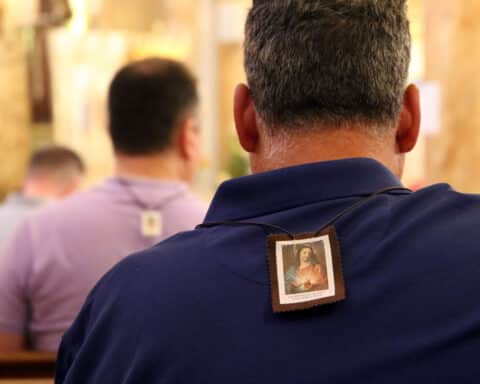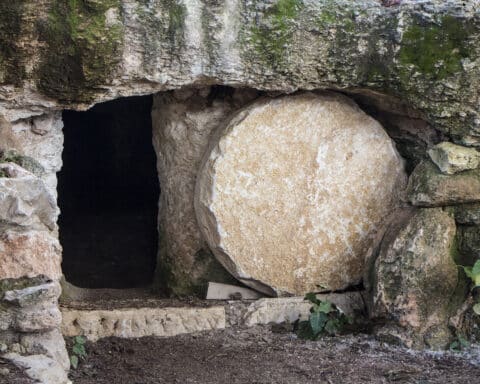Venerable Fulton Sheen once wrote, “Unless there is a Good Friday in your life, there can be no Easter Sunday.” None of us can understand the joy of Easter without the suffering of the passion. John’s Gospel tells us, “Standing by the cross of Jesus were his mother and his mother’s sister, Mary the wife of Clopas, and Mary of Magdala” (Jn 19:25). These three Marys were special witnesses of the Lord’s death.

But their story doesn’t end there. Each Mary is a special witness of the Resurrection too. So to pass from Good Friday to Easter Sunday, we should follow in the footsteps of the three Marys.
Mary of Clopas: From the Old Covenant to the New
Mary of Clopas is the most obscure of the three Marys. In John’s Gospel, she is identified with Jesus as simply “his mother’s sister” (Jn 19:25). One tradition holds she was the Virgin Mary’s sister-in-law. Mark tells us she was among the followers of Jesus who witnessed his teaching in Galilee and ministered to him (cf. Mk 15:41).
Some theologians say that Mary of Clopas represents the final vestige of the Old Covenant, making way for the new era inaugurated by Christ. Her presence at the Crucifixion symbolizes the transition from a faith defined by lineage and law to one opened to all through grace. As “his mother’s sister,” she embodies the familial and covenantal bonds of the old order, now to be transformed into the universal family of God’s children. This transformation is mirrored in the fading of the Old Covenant, replaced by the New, where faith, not blood, defines one’s relationship with God.
Mary Magdalene: From corruption to glory
Mary Magdalene’s story is famously one of redemption. Once tormented by seven demons, her purification through Christ’s intervention symbolizes the broader cleansing of creation from sin’s corruption. Her role as the first to witness the resurrected Christ underscores her emblematic representation of humanity redeemed and restored to glory. John reports she was the first to find the tomb empty (cf. Jn 20:1).
In Mary Magdalene, we see the reversal of Eve’s transgression — where Eve reached prematurely for knowledge and brought about the fall, Mary Magdalene’s obedience and restraint herald the new creation in Christ. Her pursuit of chastity and the control of her passions brings about a newfound glory.
Mary, the Mother of Jesus: The fulfillment of perfection
On Good Friday, the Virgin Mary suffers with Christ at the foot of the cross. Mater Dolorosa, she shares his sorrow. It is a sorrow for our sin, sorrow transformed into love by Easter Sunday. Pious tradition holds that Jesus appeared to the Virgin Mary on Easter morning, allowing her to share in the joy of the Resurrection.
In Mary, we encounter the culmination of divine revelation and the perfect model of discipleship. She is the perfection that both precedes and completes the process of redemption. She is the archetype of the Church, the bride of Christ, fully realized in glory and grace.
The threefold pattern and Easter reflection
The collective presence of the three Marys at the crucifixion is no mere historical footnote but a theological statement about the nature of God’s redemptive work through Christ. The three Marys reflect the journey from the Old Covenant to the New, from sin to salvation, and from discipleship to divine perfection. They symbolize, respectively, faith, hope and love, the theological virtues present in the Easter mystery.
God, in his providence, brought each of these Marys to the cross that fateful day. And in his loving mercy, he made each of the three Marys a witness of the Risen Christ.





